GTA: San Andreas HD on Xbox 360 is a mobile port
Is HD really the best format for this decade-old classic?
So what's the score with the new HD version of Grand Theft Auto: San Andreas on Xbox 360? In a move seemingly timed to coincide with the 10th anniversary of the game's release, the emulated Xbox version available through Games on Demand has been replaced by a new version that promises "720p resolution, enhanced draw distance and Achievement support".
Curiously, there isn't an equivalent new version of the game available on PlayStation 3. Instead, PS3 owners have to make do with the original PS2 release, which runs on Sony's software emulator and hands in visuals and performance that look like a very close match for the game in its original setting. That probably sounds like a back-handed compliment, but after playing the Xbox 360 remaster for a while, we're actually glad the original game is still available somewhere.
There has been some speculation about the basis of the new Xbox 360 HD version. Is it a port of the original PC version? Does it include assets from the enhanced mobile edition available on iOS and Android? What's the frame-rate like? And, bearing in mind the rudimentary nature of the visuals, is any anti-aliasing supported?
It becomes clear pretty quickly upon loading the game that we've seen a version of GTA: San Andreas rather like this before. Really quite recently in fact. The Android version formed part of our testing for the Nvidia Shield Tablet, and the Xbox 360 HD version appears to be a straight and somewhat uninspiring port of that mobile release, delivered by members of War Drum studios, whose names have been added to the credits.
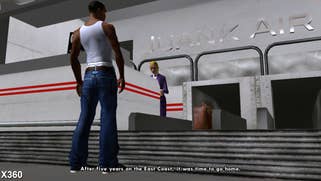


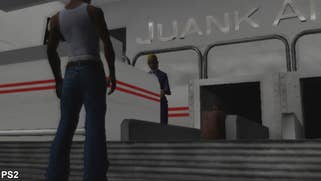
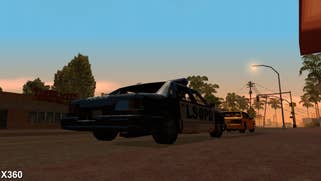
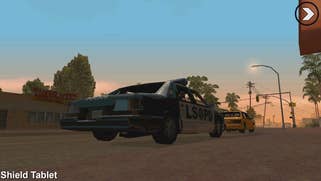


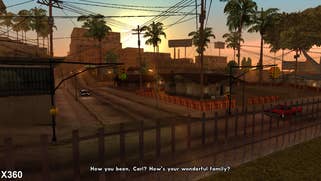
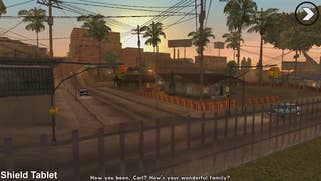
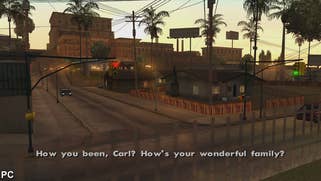


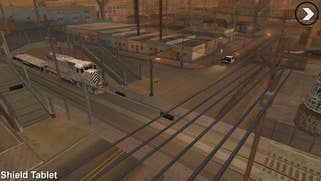

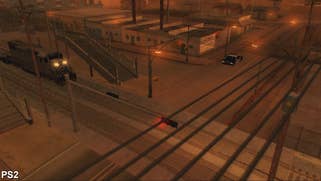

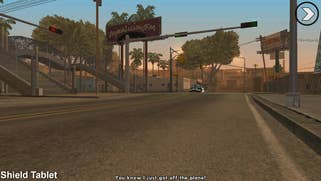
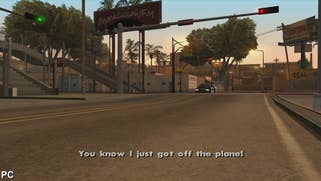
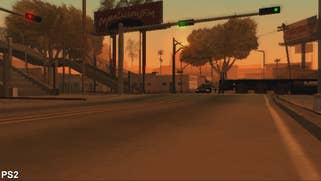

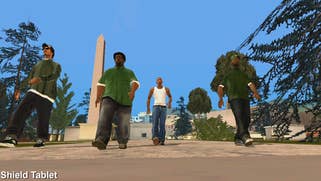


We took a look at the beginning of the game across four platforms - PS2, PC, Xbox 360 and Android. The PS2 version is more limited in many regards than its siblings, certainly in terms of draw distance, and also seems to be running a very low precision framebuffer, resulting in a stipple-like effect in the visuals. However, it also has its own sunny bloom effect not found in any of the other versions we tested. Not surprisingly, the PC version (released at the same time as the original Xbox game) is fairly close to the original, complete with its unimpressive, constricted field of view in widescreen mode.
Viewed side by side, Xbox 360 and Shield Tablet games appear to be a close match - the higher-resolution 2D artwork and the new front end are much the same, though the new console release appears to possess enhanced draw distance over the Android version (even when it's set to 100 per cent on the mobile version). Unfortunately, aside from the inclusion of Achievements, there's very little love given to this new edition. Just like the Android release, there's absolutely no anti-aliasing available, whereas even the original PC version supports this, while the vast majority of Xbox Originals on the 360 emulator supported 2x or 4x MSAA depending on the title.
What's even more unimpressive is that frame-rate is capped to 30fps and you don't even get a locked, consistent performance level. Travelling around Los Santos, we note occasional hitching and stuttering, with frame-time dips often in excess of 60ms, which translates into momentary dips where the game is running at the equivalent of 15fps.
What could have been an opportunity to produce the ultimate, definitive version of GTA: San Andreas comes across as something of a missed opportunity. There's debate on GTA fan sites about the extent to which the mobile version is better than the PC original in terms of elements such as draw distance and asset quality - the Xbox 360 version occupies 2GB of space vs the 4GB of the original PS2 and PC versions. Certainly the mobile release on which the 360 game is based appears to lack effects, such as the screen distortion designed to emulate heat haze, while radio station music is pared back, presumably because of licensing issues. This 360 port also suffers from glaringly obvious bugs, like audio cutting out completely during some cut-scenes.
In revisiting San Andreas, it's actually the PS2 original that comes across as the most authentic of the lot: a technological masterpiece of its time, with assets built to service what is today a relatively miniscule resolution, but at its most comfortable on the original target hardware. Curiously, despite the often crippling frame-rate, the controls just seem to feel better in some ways than the remastered version.
Scaled up to 720p and beyond, even with the enhanced assets, it's clear that the level of detail in the assets doesn't really stand up to scrutiny. The game wasn't really designed to scale in this way and it shows. At just £2.99, the Xbox 360 port is keenly priced for what it offers, but we can't help but wonder whether keeping the Xbox Originals version - at least alongside any HD remaster - may have been the preferable option.





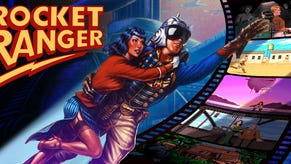









.png?width=291&height=164&fit=crop&quality=80&format=jpg&auto=webp)

